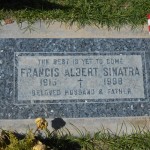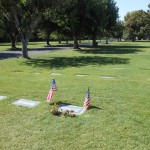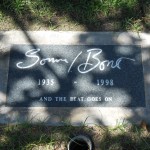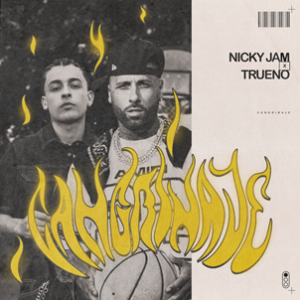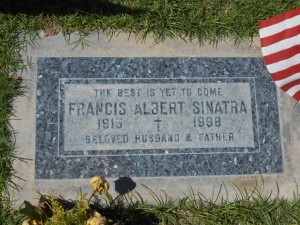 A few weeks ago I happened to be in Palm Springs, CA with a couple of spare hours, so I paid Frank Sinatra a visit. For those unfamiliar with his life, he made Palm Springs his permanent home in the 1950s, so far as it was possible for someone whose career required a nomadic life. When he retired for good in 1995, he returned to the desert he loved and chose it for his final resting place.
A few weeks ago I happened to be in Palm Springs, CA with a couple of spare hours, so I paid Frank Sinatra a visit. For those unfamiliar with his life, he made Palm Springs his permanent home in the 1950s, so far as it was possible for someone whose career required a nomadic life. When he retired for good in 1995, he returned to the desert he loved and chose it for his final resting place.
Considering that his cultural footprint in 20th-century America was greater than all but a handful of peers (Bing Crosby and Elvis Presley come to mind), Sinatra’s grave is in an unpretentious place. Though I had found the address for Desert Memorial Park in neighboring Cathedral City online prior to arriving in Palm Springs, I drove past it twice, thinking that it would have a more grand entrance, before I finally spotted from the street telltale bunches of flowers scattered on the grass. I found an office beside a small parking lot, where I was greeted by a white-haired gentleman with a handlebar mustache.
“I’m here to see Frank,” I told him.
“I can help you with that,” he said. He gave me a map of the cemetery and pointed to a nearby grave with flowers and two small American flags. “Frank is right over there.”
I thanked him, walked a few yards up the driveway, and there was Frank, resting peacefully beside his mother and father and someone I didn’t recognize. Frank’s stone, like all the others, was flat to the ground (to facilitate mowing the grass) and a standard-sized two feet wide, distinguished from the others only by a fancier grade of marble and the words “The Best is Yet to Come” inlaid above his name and life dates. A nice memorial, but as unassuming as the memorial park where it lay.
On the way back to my car, I found the white-haired gentleman, who had stepped outside for a smoke. “Do you get many visitors?” I asked.
“We get a few every week,” he said. “Sometimes a tour bus will stop by. People come from all over the world.”
I felt a little curious. “Do you get any unusual requests?”
“Sometimes, people want to be buried near Frank,” he said. He pointed to a nearby wall. “Unfortunately, the best we can offer is space for their cremated remains over there.”
I thought for a moment. “I imagine some might take you up on it, “ I said. “This is a nice place.” I wasn’t just being polite; I meant this.
He thanked me, offered to help with anything else I needed, then went back into his office to escape the June afternoon heat. I got back in my car, eased up the driveway, and after a brief search found Sonny Bono’s grave marker. It was similar to Frank’s, with Bono’s name in autograph script and the words “And The Beat Goes On” on the bottom. A couple of minutes there was enough, then I returned to the refuge of my car and its air-conditioning.
On the way to my hotel I slipped into the CD player one of Frank’s albums, A Swingin’ Affair, which starts with two fabulous songs, “Night and Day,” and “I Wish I Were In Love Again.” For the next few minutes it was 1957 all over again, and there was Frank: young, swinging, and making the music that enabled him to leave his mark forever on the world.
